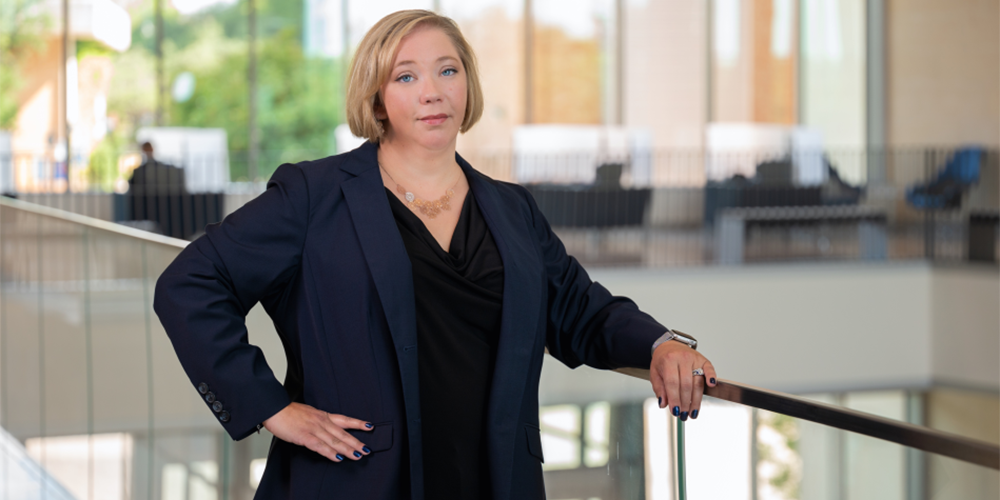UTA expert: Employers should embrace flexibility as remote work ends

Last year, the COVID-19 pandemic forced many employers to send their workers home. Almost overnight, employees packed their desks and rearranged their lives to accommodate remote working.
Sixteen months later, facing climbing vaccination rates but also aggressive virus variants, businesses are determining whether their workforces should return to the office, stay home or return home.
Erin Bowen, the A. Dale Thompson Professor of Leadership in the Department of Psychology at The University of Texas at Arlington, weighs in on how the pandemic has impacted workplace psychology and ways that employers can prepare for a successful return to in-person operations.
Q: How has the pandemic affected employees’ mental health?
A: The pandemic is a multi-level stressor, impacting individuals’ physical health, creating economic challenges, isolating workers from important social outlets and changing employees’ experiences of what it means to go to work. Work-related stress spilled into personal situations and vice versa. The psychological space that allowed a person to draw a boundary between work and their personal life vanished.
Q: Did these additional stressors impact workers’ productivity?
A: The issue of productivity is complicated. Some people reported big improvements, as typical office distractions subsided. For many more though, productivity took a huge hit. This is especially true for women, as well as others with caregiving responsibilities or personal issues exacerbated by the pandemic. For groups that suffered, it could take years to reverse the professional losses brought on by the pandemic.
Q: You mentioned recovery from professional losses. Are there specific skill areas where workers may have fallen behind their pre-pandemic abilities?
A: Absolutely. Consider pilots and airline employees who were furloughed or on reduced flight schedules for nearly a year. Their return to work is likely to be highly stressful and even risky. As air travel rapidly returns to pre-pandemic levels, those people must refresh their safety and performance routines in an environment where the margin for error is zero. This is an area I plan to watch closely in my own research.
Q: You’ve demonstrated that remote work has benefits and disadvantages. What are employees concerned about as they return to traditional office environments?
A: Employees have many concerns, and it can’t be assumed that all of them are worried about the same things. Many issues boil down to uncertainty. We’ve lost our autopilot, day-to-day routine of generally knowing what the coming days or months will bring. There is a deep sense of instability across our personal and professional lives.
This return isn’t like students coming back to school from summer vacation. There are many psychological factors to consider: People have lost family members or may be dealing with physical or mental health issues. Additionally, co-workers may be on opposing ends of the political spectrum as it relates to workplace health and safety.
Q: What recommendations would you make to employers as they prepare for in-person operations?
A: Embrace flexibility wherever you can. This doesn’t just mean flexible work hours or remote work. Have a flexible mindset. Appreciate the different experiences and emotions of employees as they transition back. Be willing to discuss approaches like split shifts or non-standard work schedules to accommodate those still dealing with family care or personal health issues.
Don’t ignore the politics. This will be tough, but employers cannot ignore the fact that decisions about health and safety are laden with political and emotional overtones. The best approach is to acknowledge differences in opinions and emphasize a culture of mutual compassion and respect.
Communicate! When situations are uncertain or changing frequently, there is a need to communicate more than when it’s “business as usual.” Employers must remember that communication is a dialogue and not a monologue. Workers need to feel that they can ask questions, raise concerns or get clarification without putting their careers at risk.